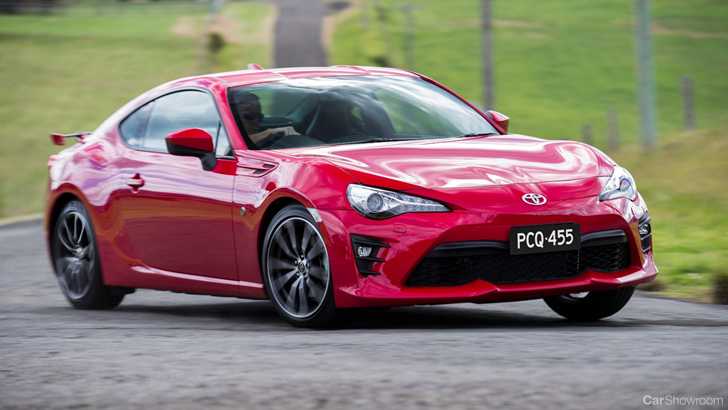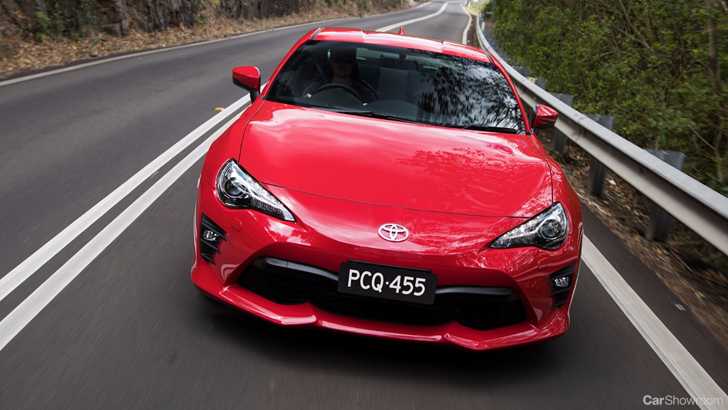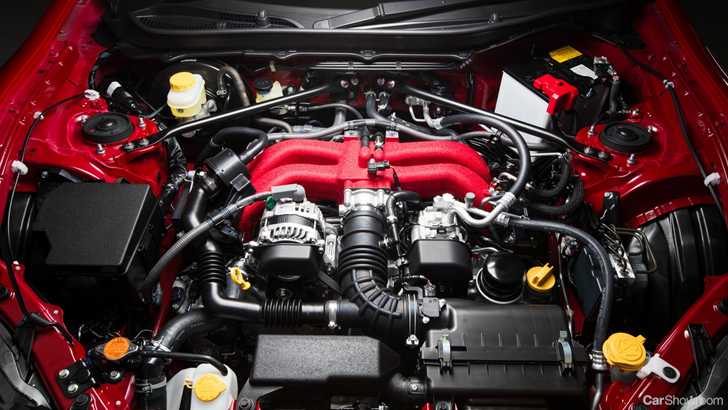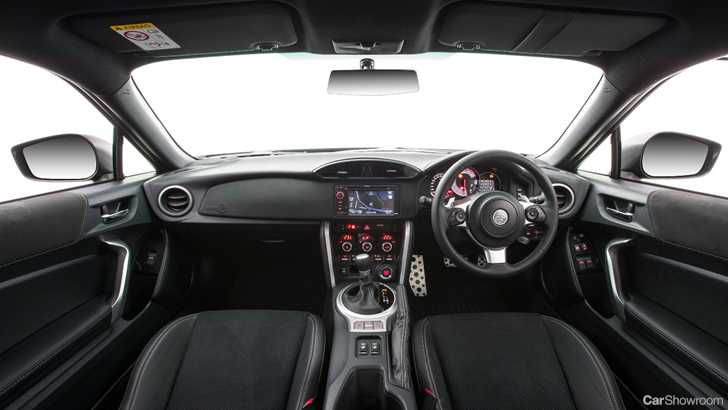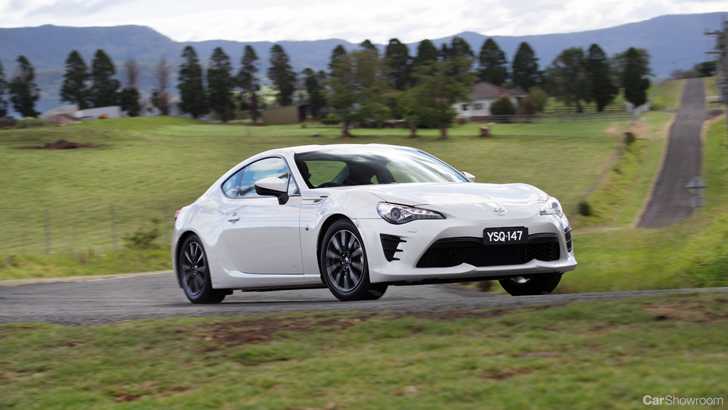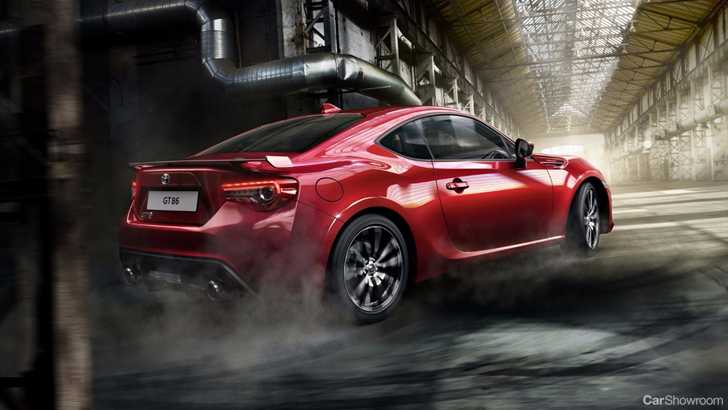The Toyota 86 had been a long time coming, rolling off the factory wearing the logo of intersecting ovals belonging to a Japanese automotive giant during a time when the marque was historically most removed from its illustrious sports car roots.
Since 2012, the 86 has set the bar as the people’s hero, evidenced by the decision to have its name be an identifier as a spiritual successor to the AE86. Just prior to its debut, an arduous wait was underway for a driver-focused, inexpensive, lightweight, simple, fun, rear-wheel drive coupe with decent performance.
It promised thrills that were typically reserved for much more expensive machines, of the variety that, for that period, remained unattainable for the normal driving enthusiast. The volume of hype the car had to live up to following its initial announcement was almost cripplingly high, but thankfully those involved with the project were obsessive about detail and took the opportunity to create the ‘right’ car very seriously.
Like a lot of the best products, the features you leave out are often more important than the ones you include.
With a heritage that includes the Celica, MR2, and Supra, it might come as a surprise that Toyota forged a collaboration with Subaru to kickstart its development, but the strengths both automakers serve to concoct a car unique to the purpose, and thus the BRZ exists under the Subaru banner as the 86’s near-identical twin.
It has a 2+2 layout and a naturally-aspirated flat-four engine mounted up front (but behind the front axle) and low to the ground. With about as little grip as necessary for livelier handling from its regular spec tyres, the refreshingly simplistic approach has much in common with the Mazda MX-5.
Toyota has been steadily, but ever so subtly, making considered (if conservative) improvements to the formula. And the 2017 car is now a more rounded package, with a little more power, an improved interior, more composed ride, better front end bite, and some exterior tweaks to hit home its sporty pretence.
While not perfect, and certainly having its share of criticisms, for what it offers there are very few other cars that can provide the same kind of driver-centric excitement without asking for a lot more of your hard-earned cash.
Its value-to-fun ratio is a triumph, but we live in a world where convenience is usually king. People expect their cars to fill multiple roles, and to do them well. Can a purpose-built sports car, however inexpensive and purely conceived, juggle the kind of secondary talents buyers are demanding? And are its positive attributes enough to offset some of its more practical shortcomings?
Exterior
“…this car may lack some of the styling features boasted by other models, but we love its idealistic values.” - Top Gear
By now you’re probably quite familiar with Toyota’s sole coupe - that compact two-door silhouette only being mistaken for the Subaru BRZ. That’s because both cars are essentially 5 years old at this point, with each year bringing minor visual changes in addition to equally conservative) mechanical alterations.
It might not be a head turner of the loud and bombastic variety, but that’s because the 86 is meant to excel while driven and not posed around in. The car’s look is sporty enough to distinguish it from the common sedans and crossovers, though. The long bonnet, low swooping roofline, and dual exhaust exits helps with this to some extent, but clearly form takes a backseat to function here.
The 86 comes standard in the lower grade GT spec with 16-inch alloys while the more expensive GTS receives a set of 17-inch wheels and a low fixed rear spoiler. Brighter HID (High Intensity Discharge) front illumination and LED daytime running lights are also exclusive to the GTS.
Engines and Drivetrain
“Power changes are appreciably small, but benefit delivery and throttle response when accelerating from corners – as does the changed final drive ratio…” - Motoring
Only one engine is available for the 86, and it’s the most important contribution by far from development partner Subaru. Using their signature horizontally opposed Boxer engines, the responsive naturally aspirated flat-four 2.0-litre FA20 engine produces 152kW and 212Nm of torque.
Although, units fitted with the 6-speed automatic will have that power and torque figure inhibited to 147kW and 205Nm due to the drivetrain loss associated with torque converter transmissions and its inherent inefficiencies. In addition, it misses out on intake modifications and ECU tweaks Toyota made solely to the manual version.
For a light car like the 86, 152kW is plenty enough to endow a car with decent speed. Despite some calling for Toyota (and Subaru) to slot in a more powerful motor, the engineers have to wrestle with compromising the 86’s linear response and extra weight offsetting the car’s balance and have thus shied away from turbochargers or a larger engine displacement.
The manual transmission is definitely worth the extra effort to change gear as it’s a slick shifter that goes a long way in connecting you with what’s going on under your seat. The automatic isn’t a bad choice per se, and can keep up in most cases. But it is just that last couple of tenths where even small stumbles break the immersion that the rest of the car was working toward.
Interior
“…the 86’s sports seats are not only comfortable and supportive, they also do a terrific job of preventing occupants from sliding around.” - CarAdvice
Stepping into the 86 and it becomes clear that the focus of the car’s development was for it to be a driving machine first and foremost. Other priorities such as optimum comfort, practicality, and a being technologically impressive were viewed as secondary.
As a driver, the cabin is angled toward your needs to negotiate the car and the road ahead with all the dials and controls front and centre, the steering wheel where it should be, the pedals very well positioned for juggling clutch, brake pedal, and accelerator. You’ll sit low, secured by the seat bolsters, with the car wrapping you at near-elbow level like a sports car should.
That isn’t to say it’s a barren interior with only the most minimal of amenities. The seats, while not supremely padded, are still comfortable. The build materials along with the finishes are decent as well, though you’ll have to learn to love harder plastics. Being a Toyota, it’s screwed together tightly and will probably stand well against the ravages of wear.
There’s dual zone climate control and even a touchscreen infotainment system (6.1-inches) with Bluetooth connectivity and displays the feed from the standard reversing camera. Satellite navigation, though, is reserved for the more expensive GTS grade.
It’s also somewhat practical with two small rear seats, unlike homeland competitors like the Mazda MX-5 and Nissan 370Z which are strict two-seaters. Unsurprisingly, we do not recommend the 86 for anything involving more than two adults on a longer journey, but small children can still be ferried around without too much trouble bar from the possible onset of claustrophobia.
Unlike a lot of other two door sports coupes, the 86’s boot is decently sized and actually usable at 237-litres. Enough for groceries or a weekend trip provided you pack light.
Behind The Wheel
“…perfectly balanced, and the relatively low overall weight of the car, coupled to a low centre of gravity, means it excels in corners.” - AutoExpress
Instead of aiming for the traditionally accepted optimal 50/50 weight distribution, Toyota’s engineers found that the best way to accentuate the car’s rear-drive liveliness while aiding in high speed stability was to leave the rear end lighter.
This results in 47 percent of the car’s weight is handled by the rear axle and 53 up front. The 86 has a weight of 1,300kg, and the extra weight up front helps it bite into corners more effectively. In terms of suspension, Macpherson struts are up front and double wishbones are tasked at the rear.
A Torsen limited slip differential is now standard on every 86 which does help in some low grip situations but also to gives able drivers more room to play when throwing the car around a particularly tempting medium-speed bend with the tail out.
As we alluded to earlier, the car’s driving position is one of its best assets. The controls feel tight and immediately natural. Whether you’re a seasoned driving enthusiast or walking away from a life filled with sedans and crossovers, you’ll appreciate how communicative and lithe the 86 feels to drive.
Safety And Technology
“Further reinforcing its case is a decent list of kit,..The only significant option is sat-nav.” - Autocar UK
ANCAP tested the 86’s twin, the Subaru BRZ in early 2013 and the safety package has not been altered drastically since then, therefore the 5-star rating it had been given remains today. It comes with seven airbags, anti-lock brakes, Brake Assist, and Hill Start Assist as well.
Cruise control is also standard and a nice inclusion by Toyota to let drivers relax a little on highway journeys, especially to and from track days. The touchscreen infotainment system is certainly better than not having one at all, but is seriously lacking the polish of more modern units. Subaru already updated the BRZ with a better system, making the tech gap here even more evident.
Verdict
There’s a lot to like about the 86. For the money, the number of cars that can supply this degree of on-road grins again and again are very few. It’s also a stylish two-door coupe that happens to be practical enough to shoehorn into becoming a daily driver.
If you’re willing to accept the compromises of the more analogue approach to car driving and ownership, the less luxurious but more functional interior, and the versatility limitations of the 2+2 layout, the lightweight rear-driven Toyota is one of the most rewarding cars to drive and own on sale today.
AutoExpress - 4/5 - “The Toyota GT 86 combines great fun and excellent value in a good-looking package.”
CarAdvice - 9/10 - “There’s so much to enjoy about a simple RWD sportscar and the 86 continues to march to the beat of that drum so well.”
Motoring - 80/100 - “Overall, the changes improve the 86’s liveability, as well as the way it communicates with the driver. The chassis is easier to understand, making it easier to pilot at speed and less daunting during sudden direction changes.”
Top Gear - 9/10 - “A quick lap time is not the priority from this sports car: rather, driver involvement is. The firm’s new rear-wheel drive sports car is here to prove that vehicles do not necessarily have to become ever faster, gripper and less socially acceptable.”
Autocar UK - 5/5 - “ …it’s an accessible sports car - one which won't break the bank to run either - and it's a refreshing alternative to the likes of the Mazda MX-5 for those seeking lightweight rear-drive fun.”
